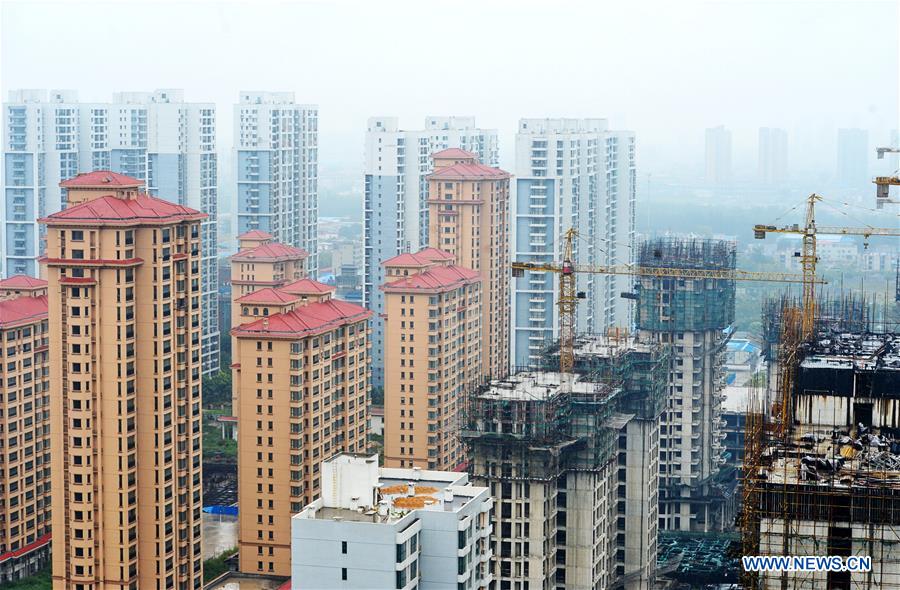
Photo taken on Sept. 18, 2016 shows a commercial property under construction in Shijiazhuang, capital of north China's Hebei Province. China's property sector saw growth accelerate in August, with more cities reporting month-on-month rises in new home prices, an official survey showed Monday. Of 70 large- and medium-sized cities surveyed in August, 64 reported new home price climbs month on month, up from 51 in July and 55 in June, the National Bureau of Statistics (NBS) said. (Xinhua/Zhu Xudong)
BEIJING, Sept. 19 (Xinhua) -- China's property sector saw growth accelerate in August, with more cities reporting month-on-month rises in new home prices, an official survey showed Monday.
Of 70 large- and medium-sized cities surveyed in August, 64 reported new home price climbs month on month, up from 51 in July and 55 in June, the National Bureau of Statistics (NBS) said.
Meanwhile, four cities reported month-on-month price declines, down from 16 in July and 10 in June, according to the NBS data.
On a yearly basis, 62 cities posted new-home price increases and six reported falls in August, compared with 58 and 11 in July.
On a year-on-year basis, the eastern city of Xiamen was the top performer, with home prices rising 44.3 percent.
Prices in Shanghai, Shenzhen and Beijing rose 37.8 percent, 37.3 percent and 25.8 percent year on year respectively, compared with 33.1 percent, 41.4 percent and 22.7 percent in July.
The city of Jinzhou in northeastern Liaoning Province saw the steepest price decline of 3.8 percent over a year earlier, flat with July.
For existing homes, 57 cities reported month-on-month price increases in August and nine reported lower prices, compared with 51 and 12 in July.
The housing market started to recover in the second half of 2015 after cooling for more than a year, boosted by pro-growth policies, which included interest rate cuts and lower deposit requirements.
The sector's recovery, however, has been uneven from city to city, with economically-strong areas reporting drastic price rises, and less developed areas still reporting huge inventories of unsold houses.
The contrasting picture has prompted local authorities to take different approaches: top-tier cities and some second-tier cities, including Shenzhen, Shanghai and Xiamen, have tightened policies to curb speculative purchases and contain bubble risks, while third- and fourth-tier cities are exploring new ways to spur sales.











